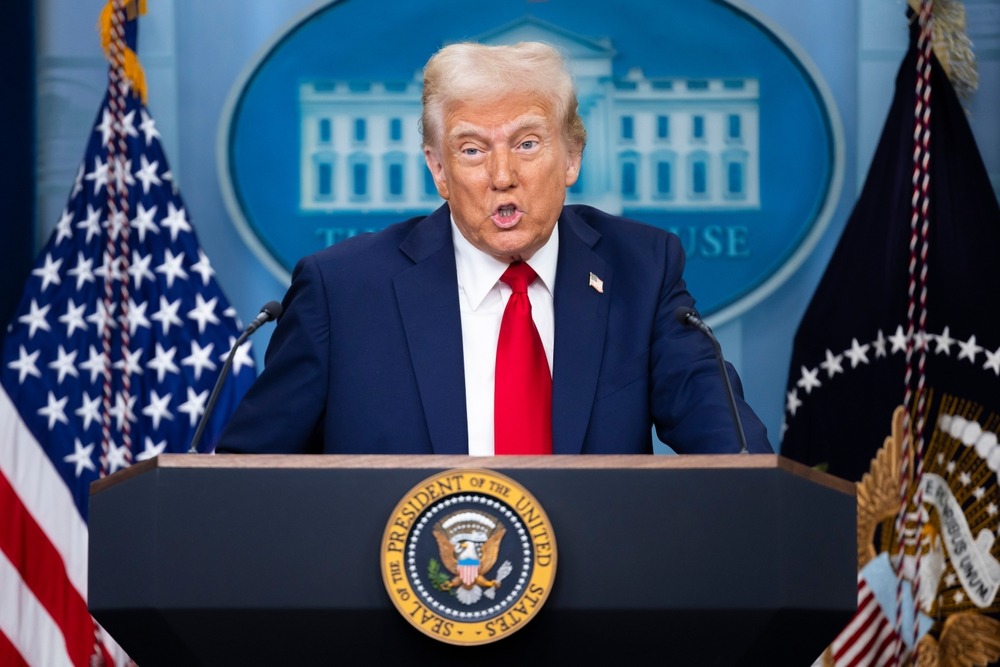Trump’s 90-day pause on reciprocal tariffs ends — but what comes next is still foggy.
The clock is ticking on President Donald Trump’s 90-day tariff truce — and as the deadline expires this Wednesday, global markets, U.S. industries, and foreign governments are bracing for what could either be a new wave of disruptive tariffs or yet another extension of talks dressed up as tough policy.
The so-called “Liberation Day” tariffs, first announced back in April, were pitched as a pressure tactic to force U.S. trading partners to lower their barriers. In theory, it was a high-stakes negotiation gambit: suspend painful tariffs, give countries time to deal, and reap new trade terms that favored American exports.
But with the clock now at zero, there’s no clear roadmap — only a flurry of letters, vague threats, and a single partial trade deal to show for it.
Trump’s Letters Signal Tariffs — Or More Delays
In a surprise move this week, Trump sent formal letters to seven countries — Japan, South Korea, Malaysia, Kazakhstan, South Africa, Laos, and Myanmar — laying out new tariff levels that would take effect August 1. The rationale, according to the letters posted online by Trump himself: “longstanding and unfair trade imbalances.”
The tariff levels mirror those announced on April 2, but with a new deadline tacked on. In some cases, Trump warned tariffs could climb as high as 70% — up from the initial “Liberation Day” average of around 46% — unless trade barriers to U.S. goods are lowered.
Notably, the letters also left the door open: tariff rates could be reduced if these countries act fast to eliminate their own import duties on American products.
It's unclear how many more letters will follow, or whether major economies like the EU or Mexico will receive similar ultimatums.
One Deal Down, 89 to Go?
When Trump’s team first floated “Liberation Day,” they promised it would be the catalyst for “90 deals in 90 days.”
That optimism hasn’t aged well.
So far, only Vietnam has reached even a preliminary agreement. Trump revealed last week that Vietnam’s tariff rate would be capped at 20% — down from 46% — in return for dropping all tariffs on U.S. goods. While framed as a win, trade experts note Vietnam already had relatively low barriers and was eager to avoid escalation.
Trade economist Dr. Lindsay McNeill, from Georgetown University, offered a blunt assessment:
“You don’t rewrite global trade architecture with a ticking clock and vague threats. The administration has leaned heavily on spectacle, but that’s not the same as leverage.”
The U.K., which wasn’t subject to the reciprocal tariffs, also reached a limited trade arrangement. And there’s a shaky “truce” with China — though it leaves most of the existing tariffs in place, and little evidence of real structural reform.
What the Markets Are Betting
Amid the uncertainty, financial analysts are increasingly betting that the U.S. will kick the can down the road. Michael Zezas, strategist at Morgan Stanley, told clients this week that the most likely scenario is a short-term extension for major U.S. trading partners.
“That would restart the countdown clock for some countries, especially allies like Japan and the EU,” Zezas wrote. “We’d expect them to stay at the current 10% baseline tariff rate, but with warnings that rates could rise if negotiations stall.”
Wall Street has responded cautiously but hasn’t panicked — the S&P 500 was flat in early-week trading, suggesting investors aren’t pricing in immediate economic shock. But some sectors, especially agriculture and automotive, are watching nervously.
What This Means for Businesses and Consumers
If the full tariff regime kicks in — especially the eye-watering 70% rates floated in the letters — U.S. companies relying on imported materials, machinery, or parts from the listed countries could face massive cost spikes.
Small and mid-sized manufacturers are particularly vulnerable. According to the National Association of Manufacturers, over 58% of U.S. small manufacturers depend on imported inputs, many of which are not easily substituted domestically.
For consumers, the fallout could come later — but it’s real. Higher import costs could eventually ripple into increased prices for electronics, appliances, and cars. The American Apparel & Footwear Association warned that U.S. clothing retailers could see wholesale prices jump up to 25% if sourcing shifts don’t happen quickly.
People Also Ask
What are “reciprocal tariffs”?
Reciprocal tariffs are trade duties imposed by one country that mirror or match the tariffs imposed on it by another. In Trump’s framework, if a country imposes a 40% tariff on U.S. goods, the U.S. would respond with a similar or identical tariff. The idea is to pressure trading partners to lower their own barriers by threatening symmetrical penalties.
Why is it called “Liberation Day”?
“Liberation Day” is a term coined by the Trump administration to describe the original April 2 announcement of sweeping reciprocal tariffs. It was framed as the U.S. "liberating" itself from years of one-sided trade relationships. Critics argue the name is more political branding than substantive policy.
Will these tariffs affect everyday consumers?
Yes — but not immediately. If tariffs are fully imposed, they’ll first impact manufacturers and importers. Over time, those increased costs could trickle down to consumers, particularly on items like electronics, cars, appliances, and clothing. Price hikes could hit by the end of the year if no new deals are reached.
Which countries are at the highest risk of new tariffs?
As of now, Japan, South Korea, Malaysia, Kazakhstan, South Africa, Laos, and Myanmar have all received letters outlining new tariff levels. Countries like the European Union and Mexico are also under review. Vietnam is the only one to strike a deal so far. Nations with persistent trade surpluses and high tariffs on U.S. goods are the primary targets.
Is this likely to trigger a trade war?
Not a full-scale one — yet. But there’s potential. If the U.S. imposes steep tariffs and countries retaliate with their own, it could escalate quickly. Investors are betting on de-escalation for now, but economists warn that a misstep could lead to supply chain disruptions, price increases, and slower global growth.
Strategy, Stall, or Something Else?
So what exactly is “Liberation Day” 2.0 turning into — a serious trade revolution or just another stalled negotiation wrapped in bluster?
The answer seems to be: somewhere in between. Trump’s strategy is built around unpredictability, headline-making threats, and eleventh-hour pivots. But behind the drama, there’s growing skepticism among economists and allies alike that this approach is sustainable.
If the tariffs are imposed as written, the short-term economic pain could be significant. If they’re delayed again, it raises questions about credibility — both in Washington and on the global stage.
What’s clear is this: The July 9 deadline may mark the end of the 90-day pause, but it’s not the end of the story. It’s just the next chapter in a trade saga where the rules keep shifting — and where no one, possibly not even the White House, seems to know the final play.














